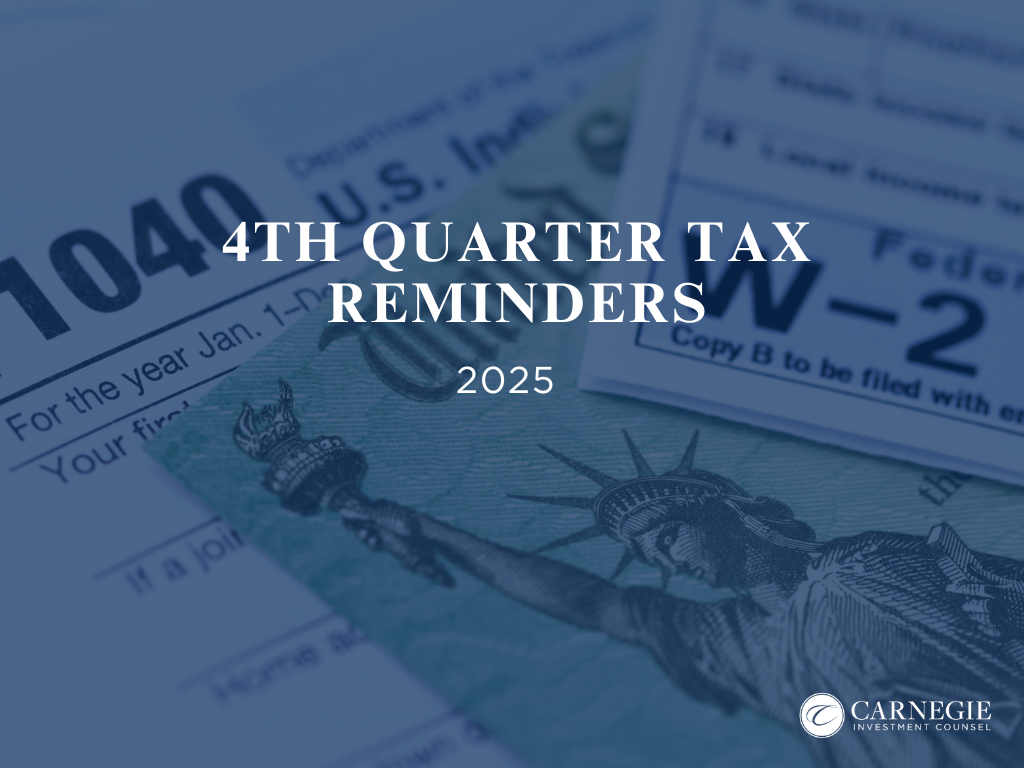The final months of the year give you an opportunity to take stock of your finances. It’s important to align your investment portfolio and tax strategy before the calendar turns. When you prepare thoughtfully now, you could reduce taxes, avoid penalties, and position your wealth more effectively for the future.

Complete Annual Required Minimum Distributions (RMDs)
If you are age 73 or older in 2025, you must withdraw the required amount from your IRAs and qualified retirement accounts by December 31. If you don’t, you face a penalty equal to 25 percent of the amount not withdrawn. Review your distributions early so you have time to correct any shortfalls, coordinate with other income sources, and keep tax liabilities in check. You can also use strategies such as qualified charitable distributions (QCDs) to satisfy the requirement while reducing taxable income.
Roth Conversions
When you convert part of your pre-tax IRA to a Roth IRA, you pay tax on the converted amount but allow future growth to occur tax-free. Consider a Roth conversion if your income is lower than expected this year or if you believe your future tax rates will rise. A conversion can also help with estate planning by reducing the tax burden on your heirs. As the year closes, you can more accurately estimate your taxable income and decide whether a conversion makes sense.
Capital Gains Management
Trim back appreciated positions to keep your portfolio balanced and aligned with your risk tolerance. Strong markets often push your allocation toward equities, increasing your risk exposure. By realizing gains strategically, you reduce the risk of drifting too far from your target allocation. Long-term capital gains rates are 0, 15, or 20 percent depending on income and are generally more favorable than ordinary income tax rates.Tax Loss Harvesting
If you hold positions that have declined, use tax-loss harvesting to offset realized gains elsewhere in your portfolio. If your losses exceed your gains, you can apply up to $3,000 against ordinary income and carry forward additional losses. Watch out for the “wash sale” rule, which disallows the deduction if you buy a substantially identical security within 30 days before or after the sale. Coordinate your tax-loss harvesting so it supports both your tax goals and your long-term investment strategy.
Annual Exclusion Gifting
You can transfer up to $19,000 per recipient ($38,000 if you are married) in 2025 under the annual gift tax exclusion without reducing your lifetime estate tax exemption. This strategy helps you reduce your taxable estate. If you want to fund education, you can also contribute to 529 plans, which offer a tax-efficient way to support children or grandchildren.
As you work through these year-end reminders, coordinate with your financial advisor, CPA, and estate attorney. Tax decisions don’t exist in isolation. The best results come from strategies integrated across your broader financial picture. Reach out to your Carnegie advisor to build a plan that reflects all of your priorities.
For informational and educational purposes only. Opinions are subject to change. Please consult with tax, legal, and financial advisors as your circumstances may be unique. Some laws and interpretations are subject to change.
Carnegie Investment Counsel (“Carnegie”) is a registered investment adviser with the Securities and Exchange Commission. Registration as an investment adviser does not imply a certain level of skill or training. For a more detailed discussion about Carnegie’s investment advisory services and fees, please view our Form ADV and Form CRS by visiting: https://adviserinfo.sec.gov/firm/summary/150488.
You may also visit our website at: https://www.carnegieinvest.com


